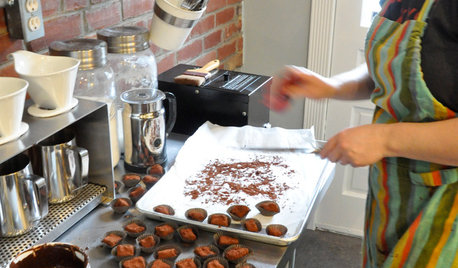Corned beef for St. Patty's Day?
bejay9_10
17 years ago
Related Stories

SHOP HOUZZShop Houzz: Legends of St. Patrick and Ireland
Beacons of luck and lore to help you celebrate Ireland and spring
Full Story
HOUZZ TV FAVORITESHouzz TV: Life, Love and Purpose Down on the Farm
A Missouri native proves that you can go home again — and discover something entirely unexpected
Full Story
SAVING WATER11 Ways to Save Water at Home
Whether you live in a drought-stricken area or just want to help preserve a precious resource, here are things you can do to use less water
Full Story
SUMMER GARDENINGHouzz Call: Please Show Us Your Summer Garden!
Share pictures of your home and yard this summer — we’d love to feature them in an upcoming story
Full Story
GARDENING FOR BUTTERFLIESGardening for the Bees, and Why It’s a Good Thing
When you discover how hard bees work for our food supply, you may never garden without them in mind again
Full Story
FARM YOUR YARDHouzz Call: Home Farmers, Show Us Your Edible Gardens
We want to see where your tomatoes, summer squashes and beautiful berries are growing this summer
Full Story
FURNITUREHow to Buy a Quality Sofa That Will Last
Learn about foam versus feathers, seat depth, springs, fabric and more for a couch that will work for years to come
Full Story
PETSWhat You Need to Know Before Buying Chicks
Ordering chicks for your backyard coop? Easy. But caring for them requires planning and foresight. Here's what to do
Full Story
KITCHEN DESIGNLove to Cook? We Want to See Your Kitchen
Houzz Call: Show us a photo of your great home kitchen and tell us how you’ve made it work for you
Full Story
EDIBLE GARDENSSummer Crops: How to Grow Tomatoes
Plant tomato seedlings in spring for one of the best tastes of summer, fresh from your backyard
Full Story


ksrogers
bejay9_10Original Author
Related Discussions
St. Patty's Day and Peas
Q
Am I the only one not serving Corned Beef?
Q
St Patty's Day Dinner?
Q
LOOKING for: Corned beef and cabbage recipe
Q
ksrogers
jimster
bejay9_10Original Author
ksrogers
alblancher
jimster
ksrogers
bejay9_10Original Author
melva02
ksrogers
david52 Zone 6
ksrogers
bejay9_10Original Author
ksrogers
readinglady
bejay9_10Original Author
ksrogers
readinglady
ksrogers
ksrogers
ksrogers
ksrogers
david52 Zone 6
ksrogers
dgkritch
ksrogers